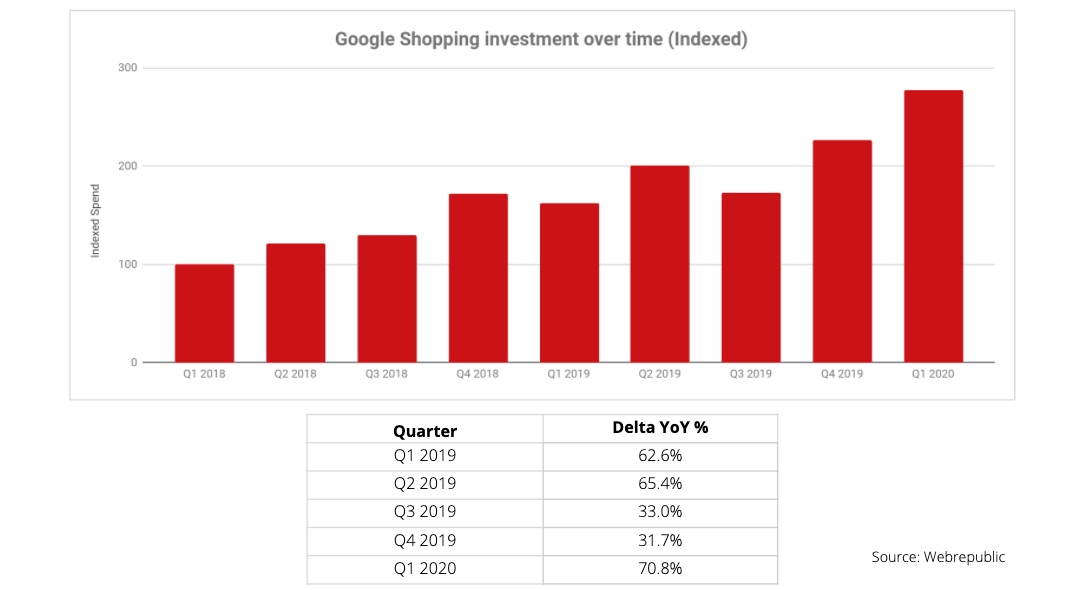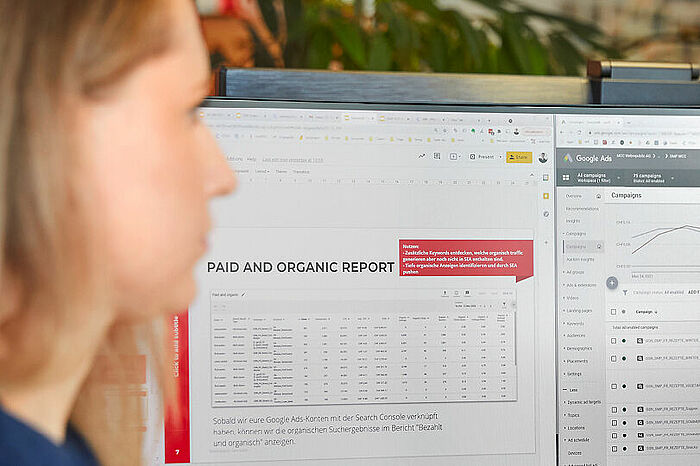More and more shop providers are fighting for the visibility and best placement of their products on marketplaces or comparison platforms. A constantly maintained and high-quality product feed plays a central role and determines the success and performance of marketing measures. However, the optimization of the product feed is often a time-consuming process and is therefore often neglected. We show why it is fundamentally important for shop operators to list their products according to best practice and efficient optimization of product feeds.
Product data feeds and feed-based advertising have been a central component of various online marketing formats such as Google Shopping and the dynamic remarketing of Facebook for several years. Feeds serve as information carriers between the shop operator and the respective marketing platform by regularly transmitting current and high-quality product data. Structure, topicality, and above all the quality of the transmitted data are imperative. They determine the visibility, success, and performance of the marketing measures. An optimized and tailor-made feed thus acts as the backbone for all e-commerce players and their marketing measures.

Facebook Shopping, Instagram Shopping, Google Shopping
Possible applications of feed-based advertising
Due to the growing media trends on Google Shopping, most recently driven by the impact of COVID-19, the feed-based format’s relevance is also increasing; therefore, the feed-based format should be an integral part of the marketing mix of every e-commerce player.

Not only Google, but also various other platforms are following the growth trend and are constantly developing new, feed-based and sales-oriented formats:
- Shopping platforms: Google Shopping, Microsoft Advertising
- Dynamic Remarketing: Google, Facebook, Instagram
- Social Commerce: Pinterest, Facebook, Instagram
- Marketplaces: Amazon, Rakuten, eBay
- Affiliate Marketing: Awin, Affilinet
- Email Marketing: Salesforce, Mailchimp, Marketo
- Retargeting: AdRoll, Criteo, Google, Facebook
Already widespread in the USA, an increasing trend toward social commerce, i.e. shopping on social media channels, can also be observed in Europe. Especially on Instagram, sales are growing rapidly and already account for a quarter of the sales from all channels belonging to Facebook. Additionally, Pinterest has recently enabled companies to run feed-based advertising campaigns.
How do I improve my product data feeds?
Since Google Shopping does not allow keywords to be defined for targeting, Google uses the search query to access the available information from the feed. It is therefore critical to describe the products in the feed precisely.
Characteristics of good data in a product feed:
- High quality and complete product specifications
- Current data: Adjusted prices, sales promotions, product availability
- Descriptive and concrete title of the product
Google Shopping, for example, attaches great importance to meaningful and correct title descriptions for products. These points should therefore always be included in product titles: brand, color, gender, material, size, style, features, etc. For instance:
- Bremont Boeing Model 247 Chronograph Men's Watch Black 43 mm Titanium Case
- Nike Sneaker Air Force 1 Low, Men, Size 42, white/black
- Scott E-Mountainbike 27.5 Inch Ladies Contesa Genius eRide 910 29 2020
How can I manage my product data feeds efficiently?
One or more feeds can be managed centrally via a feed management tool. Especially on platforms such as Google Shopping, where separate feeds must be maintained for each language, central tools can save a lot of effort. E-commerce players who use different marketing or sales platforms simultaneously can also benefit from feed management tools. These tools allow you to create channel-specific feeds from a master feed or from raw data within a very short time and which are optimally adapted to the different conditions and best practices per channel. Examples of feed management platforms are Products Up, Channable, Lengow, Channel Pilot, or GoDataFeed.
However, there are a few time-consuming hurdles that must be considered. For example, if you are a seller at Amazon and want to list many products, the only efficient way is to submit a product feed. However, scarce resources in the marketing or IT departments can lead to product data not being transmitted correctly. We therefore recommend that companies without specific know-how leave feed management to dedicated specialists who use templates to efficiently transmit and adapt the feeds. The Webrepublic e-commerce team is happy to take on this important task and get your product data feeds moving.
How the success of feed management can be measured
By checking these factors, you can evaluate the success of the measures taken.
- Do the measures release or transmit products on the platforms previously rejected for poor quality, lack of information, or noncompliance with guidelines?
- Has the visibility of the marketing campaigns increased?
- Has the click-through or conversion rate increased, for example, due to better titles?
For whom is a feed management tool relevant?
A feed management tool is suitable for all companies that manage large data sets or many channels and languages with feeds. Although shop systems also offer plug-ins for generating feeds (Shopify, WooCommerce, etc.), these rarely meet best practice requirements.
If these points apply to you, a feed management tool could be worthwhile:
- Is a large product inventory covered? (1000+ single products)
- Is there a complex feed setup with multiple data sources?
- Are numerous e-commerce channels in use?
- Is performance maximization through advanced data optimization targeted?
- Is product data distributed across multiple silos?
A feed management solution is not only suitable for shop operators but also for companies with large data volumes such as airlines or hotels. In addition, using a suitable tool can facilitate and accelerate expansion abroad or into new marketplaces.
Advanced possibilities
Besides the improvement of the data quality of product feeds, there are also numerous advanced possibilities in feed management:
- ERP data: Own ERP data such as margins or the stock of individual products or product categories can be connected to a feed. This allows new strategies to be pursued via specific rules or labels, such as increased promotion of products with high stock levels or subdivision and promotion of products by margin.
- Data linking from third-party providers (e.g., Google Analytics): Via Google Analytics, transaction values can be drawn into the feeds on a product basis. This enables you to either exclude poorly performing products or feed top sellers into a separate feed and promote them more strongly.
- Weather data linkage: Weather-dependent product portfolios can be linked to weather data via an API connection. For example, when the weather is good, corresponding product promotions could be pushed or reduced.
- A/B testing: Large feed management platforms have an A/B test function built in to test the effect of adjustments on performance.
Conclusion: Shop operators cannot do without feed management in the future
Not only is the number of platforms and marketplaces increasing, but formats for online campaigns are also becoming more diverse and complex. This offers a wealth of new possibilities, but is also a challenge: it is hard to imagine that successful shop operators could maintain their feeds manually and individually for each platform. A strategic and efficient handling of product data feeds is therefore necessary today and not tomorrow.
Our e-commerce team at Webrepublic has the know-how and passion to provide you with the personal support you need.




